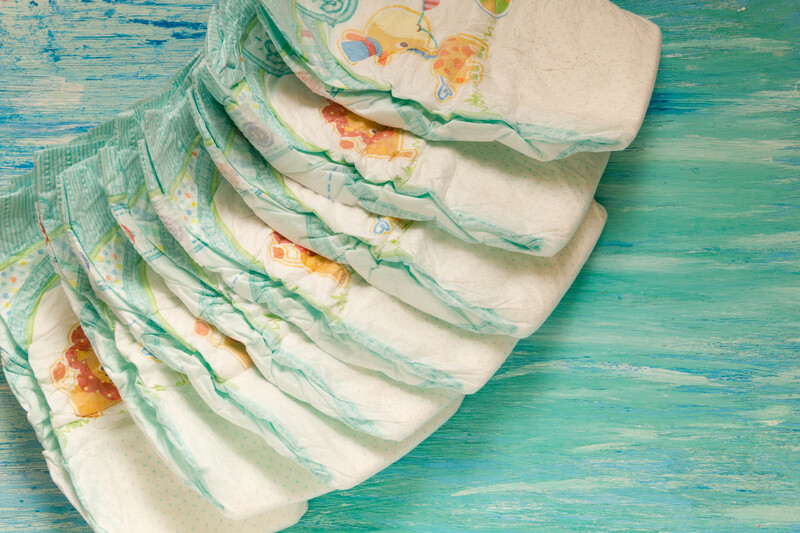Reducing PPE Waste Pollution Through Smart Disposal Methods
The pandemic saw a dramatic rise in the use of personal protective equipment (PPE), spanning masks, gloves, face shields, and gowns. While essential for safeguarding public health, this surge has ushered in a new environmental crisis: PPE waste pollution. Addressing this emerging challenge is vital to protecting not just our health but also the well-being of our environment. In this article, we'll delve into comprehensive strategies, innovative disposal solutions, and actionable steps for reducing PPE waste pollution through smart disposal methods.
Understanding the Impact of PPE Waste on the Environment
Before we explore solutions for PPE waste management, it's important to recognize the scale and consequences of the problem.
The Rise of PPE Waste During the Pandemic
- Billions of masks and gloves are discarded globally every month.
- PPE litter now constitutes a significant portion of marine debris and terrestrial waste.
- Improper disposal can lead to clogged drainage systems, wildlife ingestion, and microplastic pollution.
Why Is PPE Waste So Problematic?
Most PPE items are made from non-biodegradable plastics like polypropylene and polyethylene. When thrown away carelessly, they can persist in the environment for hundreds of years. This poses a threat to:
- Wildlife, as animals may ingest or become entangled in PPE materials
- Marine ecosystems, due to microplastics entering the food chain
- Public health, via indirect transmission of pathogens through contaminated waste

Innovative Strategies for Reducing PPE Waste Pollution
To effectively minimize PPE pollution, the focus must shift towards smart disposal methods that are sustainable, scalable, and safe. Below are several key practices.
1. Segregation and Designated PPE Bins
One of the simplest yet most effective ways to manage PPE waste is through proper segregation:
- Install dedicated PPE disposal bins in public spaces, workplaces, and healthcare facilities.
- PPE bins should be color-coded and clearly labeled.
- This minimizes contamination of general waste and increases the likelihood of appropriate processing afterward.
2. Safe Collection and Handling Protocols
Disposing of PPE requires special attention to prevent cross-contamination and protect waste handlers.
- Use double-bagging for collection, particularly in healthcare or quarantine settings.
- Train staff in correct PPE handling procedures.
- Schedule frequent pickups to avoid overfilled bins and littering.
3. Promoting Reusable PPE Options
Single-use PPE is a major contributor to plastic waste pollution. Where safe and practical, transitioning to reusable PPE can drastically reduce overall waste.
- Cloth masks that can be washed and reused are a strong alternative for the general public.
- Reusable gowns and face shields in clinical settings can help cut down on disposable gear.
*It is essential, however, to ensure reusable PPE is properly sanitized between uses to maintain safety standards.*
4. Innovation in PPE Materials
Advancement in materials science is helping the world address PPE pollution.
- Biodegradable PPE: Manufacturers are developing items that break down more quickly in the environment.
- Compostable masks and gloves: Some companies offer compostable masks that can be disposed of with organic waste.
- Recyclable PPE: Certain technologies now allow for the recycling of some PPE materials, though this is still limited in scope.
Smart Disposal Methods: Ensuring Proper PPE Waste Management
The adoption of smart mini-bins for PPE, specialized incineration, and chemical disinfection are transforming how we deal with PPE rubbish.
Smart PPE Bins: Technology Meets Waste Management
- Sensor-equipped bins alert authorities when they are full, ensuring timely collection and reducing overflow.
- Internal disinfection features (such as UV-C sterilization) reduce the risk of viable pathogens on discarded PPE.
- Some smart bins record disposal data to optimize collection schedules and inform city waste policies.
Recycling and Upcycling PPE Waste
Recycling PPE has been a challenge due to contamination and the complexity of plastics involved. Nevertheless, recent developments are opening new doors:
- Mechanical recycling can repurpose certain clean PPE, such as face shields and unused masks, into construction materials or plastic lumber.
- Upcycling initiatives are experimenting with creating bricks, tiles, and road surfacing materials from sterilized PPE waste.
- Pyrolysis and chemical recycling break down difficult-to-recycle plastics into fuels or raw materials for new products.
Medical Waste Incineration & Sterilization
Where recycling is not practical, incineration at high temperatures is still a crucial disposal method for potentially infectious PPE waste.
- Modern incineration plants have filters and scrubbing systems to minimize pollutant emissions.
- Autoclaving (steam sterilization) can disinfect PPE before it enters the waste stream, making safer handling possible.
Government and Industry Guidelines for PPE Waste Disposal
Many local governments and international bodies have issued specific guidelines for PPE waste disposal. Typically, these include:
- Encouraging the public to place used PPE in closed bags before discarding
- Running public information campaigns on safe PPE disposal habits
- Mandating businesses to comply with hazardous waste regulations for used PPE
- Implementing reporting and tracking mechanisms for large-scale PPE waste generation
Adhering to these standards helps reduce both environmental contamination and health risks.
Case Studies: Success Stories in Reducing PPE Pollution
A number of cities and organizations worldwide are taking the lead on reducing PPE pollution with innovative approaches. These examples illustrate what's possible when smart strategies are combined with community participation.
Singapore: Leveraging Smart Bin Technology
- The city deployed IoT-enabled PPE disposal bins throughout major transit stations.
- Real-time monitoring ensures bins are never overflowing.
- Collected PPE is treated in specialized waste-to-energy facilities, minimizing landfill dependence.
United Kingdom: Mask Recycling Initiatives
- Some councils partner with private recyclers to collect and process disposable masks collected from the public.
- Recovered plastics are used in paving slabs and outdoor furniture.
- National campaigns educate citizens on how and where to dispose of PPE safely.
India: Community-Led Segregation Programs
- NGOs have set up localized PPE waste segregation centers in urban slums to protect informal workers.
- Specialized pickup and sterilization ensure used PPE does not mix with general or food waste.
- Incentives encourage households and businesses to adopt eco-friendly PPE alternatives.
The Role of Individuals in Cutting Down PPE Waste Pollution
Each person plays a crucial role in reducing PPE waste pollution through smart disposal methods. Here's how you can be part of the solution:
- Opt for reusable PPE whenever feasible, especially cloth masks.
- Dispose of single-use PPE in designated waste bins rather than dropping in the open or with recyclable household waste.
- Cut the ear loops of masks before throwing away to prevent wildlife entanglement.
- Participate in local recycling or collection schemes--check for special drop-off points in your neighborhood.
- Educate family and friends about the importance of proper PPE disposal and its environmental impact.
Every small action counts when it comes to building a cleaner, safer future.

The Future of PPE Waste Management: Innovation and Collaboration
As the global community continues to adapt, advancements in PPE recycling technologies and circular economy models are paving the way for a less polluted world.
New Materials and Bioplastics
- Research into plant-based plastics aims to produce PPE that can safely compost in a matter of months.
- Hybrid materials offer the necessary filtration and barrier properties while remaining environmentally friendly.
Extended Producer Responsibility (EPR) Programs
- Manufacturers could soon be required to take accountability for end-of-life disposal of PPE products.
- This could involve "take-back" programs, recycling funding, and eco-design incentives.
Global Health and Environmental Policy Synergy
- International collaboration is key to standardizing PPE waste management practices.
- Global agreements can support innovation, infrastructure, and data sharing.
Conclusion: Working Together to Reduce PPE Waste Pollution
The challenge of reducing PPE pollution may seem daunting, but through smart disposal methods, innovation, and shared responsibility, it's possible to turn the tide. By embracing thoughtful segregation, supporting recycling breakthroughs, and making informed choices, we can safeguard both public health and the planet. As technology and policy continue to evolve, so too must our individual and collective commitment to minimizing PPE waste.
Now is the time to act. Let's make PPE protection safe for people and the planet alike.
- Reduce, reuse, and recycle PPE where possible
- Support and advocate for better waste segregation and recycling infrastructure
- Demand innovation in sustainable PPE manufacturing and disposal
Together, we can move towards a cleaner and healthier post-pandemic world by reducing PPE waste pollution with smarter, more sustainable disposal methods.
```